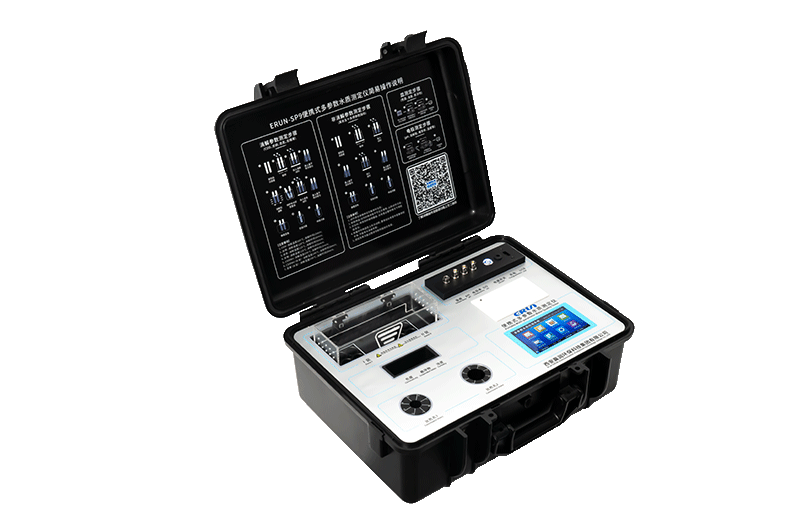concentration of dissolved minerals, salts, metals, and organic matter in water. High TDS levels can affect taste, corrode pipes, harm industrial equipment, and influence health depending on the water source. As industries, municipalities, and consumers continue to prioritize water safety, understanding how to reduce TDS in water becomes essential.
This article explains what TDS is, why reducing it matters, the most effective reduction methods, and how advanced water analyzers like ERUN-SP9 Multi-Parameter Water Quality Analyzer help maintain water compliance with precision. A real product application case is included for clarity.
TDS measures everything dissolved in water—calcium, magnesium, sodium, bicarbonates, sulfates, heavy metals, and even dissolved organic compounds. While some minerals are beneficial, excessive TDS can:
Alter the taste of drinking water
Damage industrial boilers and cooling systems
Affect food and beverage production
Influence aquaculture survival rates
Reduce efficiency in RO (reverse osmosis) systems
Indicate potential contamination
For these reasons, reducing TDS is essential globally across households, industrial operations, laboratories, and wastewater treatment systems.
RO systems force water through a semipermeable membrane, trapping most dissolved solids. RO typically removes 90–99% of TDS, making it ideal for:
Drinking water purification
Food and beverage manufacturing
Laboratories and pharmaceuticals
High-purity water applications
However, RO systems require regular maintenance and generate wastewater during operation.
Distillation boils water and condenses the steam into purified water, leaving most dissolved solids behind. It provides excellent purity but is energy-intensive and slower, making it less suitable for large-scale usage.
Deionization uses ion-exchange resins to replace dissolved ions with hydrogen or hydroxyl ions. DI is widely used in:
Pharmaceuticals
Electronics manufacturing
Laboratories
High-purity industrial processes
However, DI does not remove all organics and requires careful maintenance.
While activated carbon cannot remove inorganic minerals, it is effective at reducing:
Organic compounds
Chlorine
Odors
Chemicals contributing to TDS indirectly
It is often used as a pre-filtration step to support other systems.
Softening replaces calcium and magnesium with sodium or potassium ions. It does not reduce total TDS significantly, but it helps prevent scaling and equipment damage.

Knowing how to reduce TDS is only half of the process—accurate monitoring ensures your systems stay compliant, safe, and efficient. Manual measurement or low-grade testers can cause misjudgment, leading to:
Over-treatment (higher operational cost)
Under-treatment (safety and compliance risks)
Misleading water quality trends
For industries that rely on reliable TDS readings, professional instruments are essential.
The ERUN-SP9 Water Quality Analyzer is built for environments that require accurate, multidimensional water analysis. It uses advanced optical methods and a 16-channel design to measure more than 60 water quality parameters, including:
pH
Conductivity
TDS
Salinity
Dissolved Oxygen
Water Temperature
Users can freely configure parameter combinations to match their operational needs. It is ideal for:
Municipal water supply
Wastewater treatment
Food and beverage processing
Aquaculture
Environmental monitoring
Pharmaceutical manufacturing
Petrochemical and biotech industries
Because TDS is directly related to water conductivity, the ERUN-SP9 provides precise conductivity readings, enabling users to understand water quality trends instantly.

A food manufacturing plant recently encountered a significant rise in TDS levels inside its cooling tower circulation system. This elevated TDS caused scaling in heat exchangers, reducing cooling efficiency and increasing energy consumption. The plant needed an effective way to monitor TDS in real time and optimize its water treatment dosage.
Technicians deployed the ERUN-SP9 analyzer to continuously measure conductivity, TDS, salinity, and water temperature. The multi-parameter readings helped them quickly identify that:
Conductivity was increasing consistently
TDS exceeded the recommended threshold due to mineral accumulation
Temperature fluctuations accelerated scaling
With accurate data, the team optimized their approach:
Increased blowdown frequency to flush excess dissolved solids
Adjusted chemical dosing to reduce scaling tendency
Introduced an RO-treated makeup water source
After 10 days, TDS dropped to a stable, acceptable range. Energy consumption decreased, scaling was reduced, and equipment performance improved significantly. The plant now uses ERUN-SP9 for ongoing operational monitoring.
Accurate monitoring enables:
Correct sizing of RO/DI filtration systems
Early detection of contamination or mineral spikes
Reduced energy consumption for industrial machinery
Better compliance with local water regulations
Improved product quality in F&B and pharmaceuticals
The ERUN-SP9’s multi-parameter analysis allows teams to prevent problems before they occur, making it a vital tool for organizations managing water quality.
Lowering TDS improves taste, safety, and industrial efficiency. Whether using RO, distillation, or DI systems, the key to long-term success is accurate, continuous monitoring. With advanced multi-parameter capabilities, the ERUN-SP9 offers a powerful, reliable solution for industries and water treatment professionals working to maintain optimal TDS levels.
For users seeking better water quality, smarter systems, and long-term operational efficiency, investing in precision equipment like the ERUN-SP9 is not optional—it is essential.